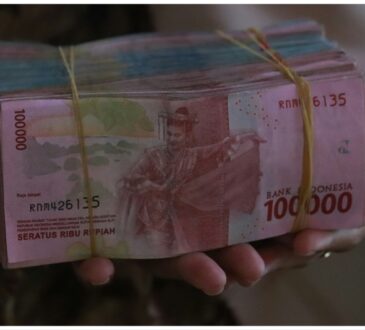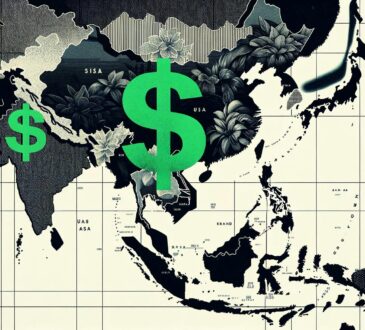
A strong US dollar and higher crude oil prices have pushed the Indian rupee to record lows in the past few weeks. Just about a fortnight ago, the rupee had hit an all-time low of 83.48.
On April 4, the rupee ended at 83.4375 against the US dollar, marginally weaker than its close of 83.4350 in the previous session, according to a Reuters report. The local unit fell to a record low of 83.4550 earlier in the session, likely prompting the Reserve Bank of India to intervene.
Also Read: RBI issues clarification on currency derivatives circular, directions to now come into effect from May 3What’s behind the fall?
Beyond the strength in the dollar, a decline in China’s yuan against the US currency is feeding into the rupee. According to Reuters, the yuan has fallen more than 2 percent in three months, pressured by growing market expectations of further monetary easing to prop up the world’s second-largest economy.
A fall in the yuan directly impacts the Indian currency given that New Delhi runs an almost 40 percent trade deficit with China and a “directional move in CNY (policy-or/and market-led) would deeply influence INR direction, and most Asian currencies,” Emkay Global analysts Madhavi Arora and Harshal Patel said in a report on March 27.
The other key factor causing the rupee’s decline is the rise in global crude oil prices. Brent crude futures hovered near $90 a barrel on April 3. Given that India is a net importer of crude oil, a rise in prices, payment for which is primarily in dollars, increases demand for the US currency.
The rupee typically weakens when there is higher dollar demand, especially from local oil refining companies, which is the case currently.
“Crude is inherently a weak point for India. Now that it is touching the $90 level, it is, of course, causing worries in the market. If crude continues to go higher along with yuan weakness, then it will weigh in on the rupee. So yes, higher crude is a factor,” said Nitin Agarwal, head of trading at ANZ.
There’s yet another risk for the Indian currency: growing expectations that the US Federal Reserve may cut interest rates later and fewer times than anticipated.
“Our base argument of rising possibility of ‘no cut’ by the Fed in 2024, if proved correct, could spill over into the Reserve Bank of India’s reaction and will be cyclically noisy for bonds and currency. That said, India bonds/INR are strong fundamentally on supportive demand, supply dynamics, and could stay a cherry-picked play in Emerging Markets,” Emkay Global’s Arora and Patel said in another report on April 3.Rupee outlook
According to Arora and Patel, the rupee will have a non-linear movement ahead, in the range of 82.50-84.25, in the first quarter of FY25.
“While INR could continue to have an appreciation bias amid low Current Account Deficit (CAD) and FPI flows, policymakers will continue to play a major role in rupee’s direction. They will closely watch the interplay of Fed’s rate cut repricing and China’s survival strategy, both of which could be key cyclical and structural plays for INR in FY25,” they said.
Although Agarwal of ANZ said the rupee’s outperformance relative to certain Asian peers stems from the strong fundamentals of India’s economy, which give the rupee a favoured outlook among global investors, he added that “factors such as (rising) crude (prices) and (weaker) CNY are beyond domestic factors. And crude tends to have an outsized impact on India.”
Agarwal sees the rupee’s move towards record lows as a temporary phenomenon if the yuan stabilises. He expects the rupee to hover at 83.60-83.65 levels, assuming no further movement in global factors.https://www.moneycontrol.com/news/business/mpc-poll-rbi-will-maintain-status-quo-in-april-monetary-policy-say-economists-bankers-12521541.html




